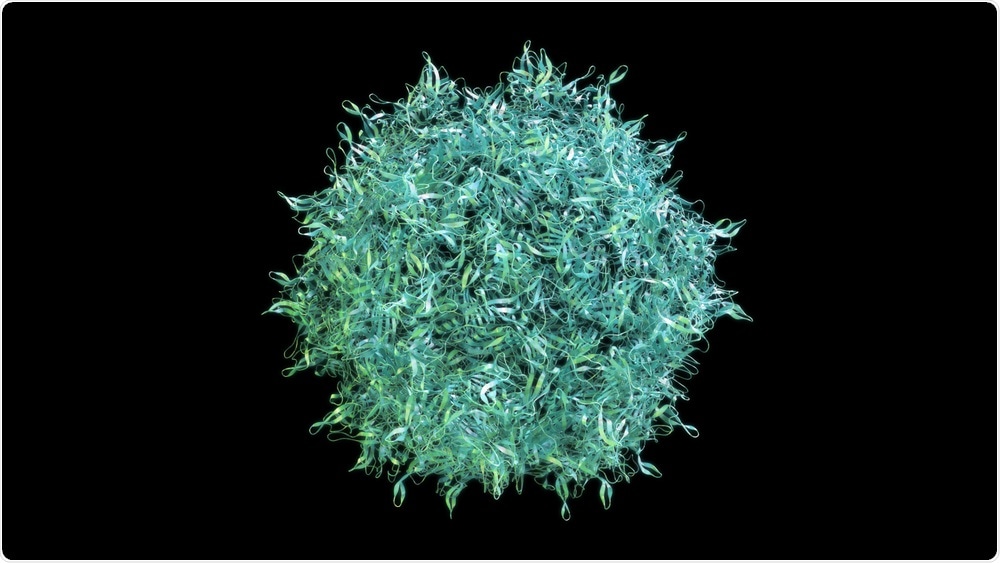A study published recently in eLife reports a new understanding of conditions that govern self-assembly in the protective shell of viruses.

Image Credit: Yabusaka/Shutterstock.com
It also underscores the factors that lead to inappropriate self-assembly in the shell of viral protein, which is also called a capsid and inhibits viruses from replicating.
The study outcomes show that modification of such factors to bring about misassembly in viral capsids could be a potential approach to prevent viral infections.
Viruses constitute a chain of the nucleic acids DNA or RNA that are encapsulated in a protein shell developed from multiple copies of a single protein. The function of the capsid is to shield, carry, and deliver viruses to their host.
Although the composition of viruses is simple, they have the ability to perform various complex functions that are vital to their replication cycle—one of which is the ability of viral capsid to self-assemble.
The resulting structure is a perfectly self-assembled capsid that has a precise architecture, which in a majority of the cases is spherical in shape and resembles an icosahedron consisting of 20 identical triangular faces.
“During self-assembly, a favorable binding energy competes with the energetic cost of the growing edge and the elastic stresses generated by the curvature of the capsid. As a result, incomplete structures such as open capsids and cylindrical or ribbon-shaped shells may emerge during assembly, preventing the successful replication of viruses.”
Carlos Mendoza, Lead Author, Researcher, National Autonomous University of Mexico
According to Mendoza, earlier studies on self-assembly in capsids mostly concentrated on the templated growth on the surface of a sphere, or the analysis of the ideal shape of the resulting capsid.
They had not taken into account the prospective significance of other elements responsible for capsid stability and formation, like the chemical potential difference (free-energy gain of the proteins upon assembly), the line tension (energy penalty per unit length at the rim of a growing capsid), or the desired curvature.
Mendoza and co-author David Reguera—Professor at the University of Barcelona and the UB Institute of Complex Systems, Spain—resolved this challenge by performing an analysis of the conditions and mechanisms that led to the misassembly of empty viral capsids by considering all the elements.
Their analyses proved that capsid self-assembly was entirely dependent on three factors that can be modified to cause the formation of non-spherical and open shells.
We found that the outcome of self-assembly can be recast into a universal phase diagram, a type of chart that highlights the conditions for successful viral assembly and the key factors that prevent it. Our findings advance our understanding of the physics controlling the assembly of curved shells, and explain why viruses with high mechanical resistance cannot be assembled directly and need a maturation process to stiffen the capsid and become infective.”
David Reguera, Study Co-Author and Professor, University of Barcelona
According to the researchers, the study outcomes can be directly applied to icosahedral viruses such as polyomavirus, papillomavirus, and poliovirus, but not to viruses that contain helical nucleocapsids, such as SARS-CoV-2—the virus responsible for COVID-19.
However, the study forms the basis for further studies on the conditions and chemical agents required to prevent various types of viral infections by blocking the assembly of capsid or by inducing misassembly.
Source:
Journal reference:
Mendoza, C. I., et al. (2020) Shape selection and mis-assembly in viral capsid formation by elastic frustration. eLife. doi.org/10.7554/eLife.52525.